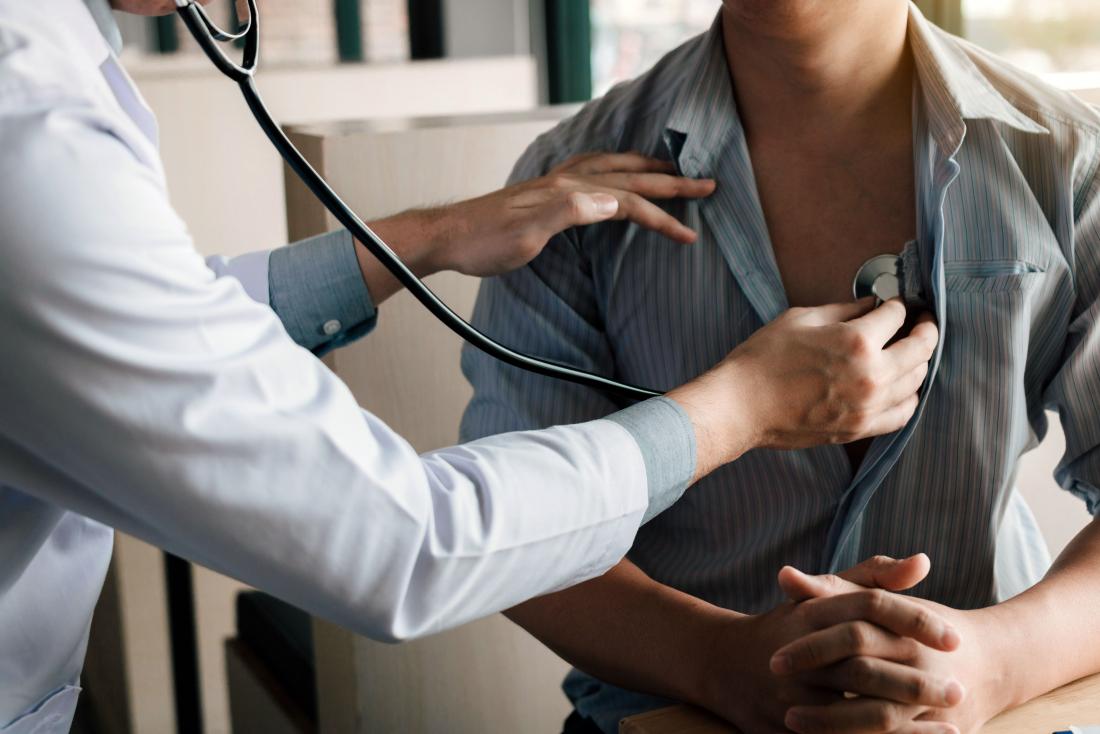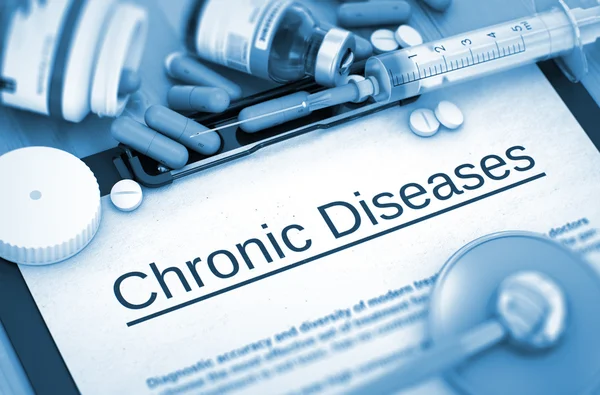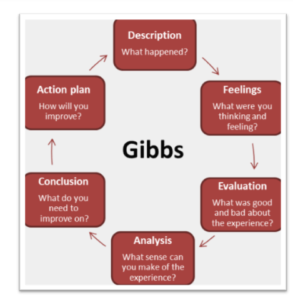The Discovery and Development of Antibiotics

The discovery and development of antibiotics has had a significant impact on medical science. Not only have they allowed us to treat bacterial infections, they have also made it possible for people to fight viral illnesses. With these innovations, we are able to avoid contracting illnesses that can cause serious problems.
Penicillin
Penicillin has saved millions of lives. It is a powerful antibiotic that works by inhibiting the ability of microorganisms to replicate. Because of its potency, it is used for treatment of infections in the human body, such as pneumonia and gunshot wounds.
Penicillin was discovered by the Scottish physician Alexander Fleming. In the 1920s, Fleming and his colleagues observed colonies of Staphylococcus aureus that had been infected by a mould. They observed that the mold was capable of destroying the colony.
After the discovery of penicillin, scientists conducted several experiments over the next two decades. However, the complexities of the process meant that the team encountered many difficulties.
One of the most difficult challenges in the pursuit of a cure for infection was figuring out how to produce penicillin in large quantities. Scientists had to find ways to increase the yield. By the time the end of World War II, US and British production of penicillin reached nearly 7 trillion units.
To improve the production of penicillin, the Department of Agriculture in Peoria, Illinois, developed new purification methods. The process involved the use of corn-steep liquor, a byproduct of corn starch.
Another method of improving the production of penicillin was the fermentation of fungal cultures. Researchers had access to deep fermentation tanks to enhance the growth rate of the fungal culture.
Erythromycin
Erythromycin is not the only drug on the block, but it does have its flaws. For instance, it is unstable in acidic conditions. Despite these niggles, it is still used to treat pneumonia in hospitals and is prescribed by more than a quarter of a million Americans every year. The best thing about this drug is that it is cheap. In fact, the cost of the most common tetracycline antibiotic is about half that of penicillin. One of the more interesting facets of erythromycin is its ability to confer significant chromosome stability to a susceptible host.
Another tidbit is that it can be used to treat a myriad of diseases, from tuberculosis to staph infections. As a result, it is one of the most frequently prescribed drugs in the world. Fortunately, the chemists at Abbot Labs have come up with an elegant solution. They have managed to synthesize more than two thousand tetracycline antibiotics. With this feat accomplished, a new generation of tetracycline antibiotics has ushered in a whole new era of clinical trial based treatment.
Streptogramins
Streptogramins are natural antibiotics that have been used to treat a wide variety of bacterial infections. They are produced by the bacterium Streptomyces pristinaepiralis. This bacteria has been found to produce a mixture of two structurally distinct compounds, dalfopristin and quinupristin, which are responsible for the antimicrobial activity of these antibiotics.
These drugs have been used to treat infections caused by Gram-positive pathogens such as methicillin-resistant Staphylococcus aureus (MRSA). The streptogramin class of antibiotics is characterized by their synergistic inhibition of mRNA translation and is considered a potent bactericidal compound.
In addition to exhibiting moderate bacteriostatic activity, individual streptogramin components have been reported to show dose-dependent bactericidal activity in combination. One drug shows particularly good results against a number of different bacterial strains in a mouse model of infection.
A streptogramin is generally classified into two subgroups, based on the ratio of its two structural components. The type A streptogramins are peptidic macrolactones that are composed of a macrocyclic lactone with several double bonds. While the group B streptogramins are cyclic hexadepsipeptides that destabilize the peptidyl-tRNA complex.
Group A streptogramins were first discovered in France in the 1960s. The group was later adapted to improve their efficacy and prevent bacterial resistance.
Chloramphenicol
Chloramphenicol is a bacteriostatic antibiotic used for the treatment of many serious infections in different parts of the body. It works by inhibiting protein synthesis in bacteria. This makes it a good choice for treating infections that are difficult to treat with other antimicrobials.
In addition, chloramphenicol has a cytotoxic effect. This means that it may cause problems in compromised patients. If you are considering chloramphenicol, you should speak with your doctor about the possible side effects.
Chloramphenicol has been used for decades in the treatment of a variety of infections in animals. The drug is available in topical formulations or is administered orally.
It is not safe for use in pregnant women. There have been reports of gray syndrome in newborn infants whose mothers were given the drug during labor. However, the incidence of aplastic anaemia has not been shown to be associated with chloramphenicol.
When using chloramphenicol, you should use a sphygmic dose of 50 mg/kg/day. Dosages higher than this may cause toxicity, which can be fatal. For severe infections caused by moderately resistant organisms, you should increase your dosage to 100 mg/kg/day.
Chloramphenicol should be used in very limited circumstances, such as when other less dangerous antimicrobials are not effective. A doctor should be consulted if you experience any of the following symptoms: abnormal bleeding, pale skin, easy bruising, hypotension, or low blood pressure. You should also keep a written list of all the medications you take.
Tetracycline
Tetracycline is a class of semi-synthetic antibiotics. They are metabolised in the human body and exhibit a wide spectrum of in vitro activity against bacteria. Their use in clinical medicine has decreased in recent decades as a result of the emergence of antimicrobial resistance. However, they remain important for the treatment of certain bacterial infections.
Tetracycline-class drugs are used in humans and animals for various bacterial infections. They are effective against Gram-positive and Gram-negative bacteria. Most tetracycline-class agents have renal excretion. However, a majority of the excretion is biliary or fecal. Several agents are in late-stage clinical development. The emergence of resistance to tetracycline-class drugs is of concern.
Third-generation tetracycline-class drugs have been developed to overcome two common mechanisms of tetracycline resistance. These mechanisms involve ribosomal protection proteins and efflux pumps. This has led to a more potent antibacterial effect compared to first-generation tetracyclines. In addition, the MICs of these agents are generally lower than the older generation.
Some third-generation tetracycline-class agents, such as eravacycline and glycylcycline, have been approved by the US Food and Drug Administration (FDA). These drugs have lower MICs than the older drug and improve oral bioavailability.
Amadacycline has also been shown to be effective against bacteria that employ a ribosomal protection mechanism. Its action is enhanced by the addition of a 7-dimethylamino group to the D-ring.
NP classes
The World Health Organization (WHO) recently released a report that provides a comprehensive overview of the global clinical antibacterial pipeline. It shows that there are 250 antimicrobial agents in early-stage testing.
Antibiotic discovery and development is a time-consuming and expensive process. It starts with basic research, and ends with marketing and approval. To get a new drug to the market, it usually takes up to 10 years, and costs over $1 billion. However, some pharmaceutical companies have already taken steps to ensure that access to new antibiotics is improved.
The preclinical antibacterial pipeline is characterized by a high level of diversity. Most of the projects involve repurposed non-antibiotics and direct-acting small molecules, but also include interesting scientific concepts. Some of the most promising candidates in the pre-clinical phase move on to clinical trials.
Pathogen-specific approaches are relatively new to the field of antibiotic research. They are focused mainly on Gram-negative bacteria, a class of pathogens that can cause serious infections. These types of drugs are not considered critical for treating Gram-positive bacteria.
New targets and mechanisms of action are another major area of interest. This includes targeting binding sites on the bacterial cell wall, membrane, or metabolism. In addition, a number of projects involve genes, phage-derived proteins, and synthetic antimicrobial peptides.
Synthetic classes
In addition to providing vital therapies for infectious diseases, antibiotics have dramatically altered modern medicine. They have also significantly extended human life spans. However, misuse of antibiotics has led to the rise of antimicrobial resistance (AMR), which has been identified as one of the greatest global health threats.
The discovery and development of new antibiotics is difficult, time-consuming, and expensive. In fact, it is estimated that developing a new antibiotic can cost as much as $1 billion. It involves a wide range of scientific and economic issues, and can take between 10 and 15 years.
The field of antibiotic research and development has faced many challenges over the past few decades. These challenges include societal, regulatory, and economic barriers. Many pharmaceutical companies have abandoned the field, and fewer companies are dedicated to bringing these new drugs to market.
To make the pipeline of new antibiotics sustainable, different strategies are being pursued. Some of these strategies are aimed at incentivising companies to discover and develop new antibiotics. Others propose treating antibiotics as a global good.
Currently, the United Kingdom government is testing a subscription-style payment model for antibiotics. This model would allow people to pay for access to new antibiotics upfront.
Uses Effects and Pharmacodynamics of Antibiotics
The uses effects and pharmacodynamics of antibiotics are a major area of study in clinical microbiology. They help determine the types of antibiotics that can be used to treat a particular infection and the dosage required to achieve a specific goal. Some antibiotics are more effective in treating certain kinds of infections than others.
Penicillin
Penicillin and other b-lactam antibiotics act by inhibiting the enzymes required for peptidoglycan synthesis. The resulting inhibition leads to bacterial cell death. Moreover, antibiotics prevent the development of bacterial resistance to the drug.
A number of pharmacokinetic/pharmacodynamic studies have been conducted in relation to the major antibiotic classes. These studies have provided valuable information on pharmacokinetic/pharmacodynamic characteristics of the drug class.
Some pharmacokinetic/pharmacodynamic relationships have been described in human data, while other studies have focused on animal models. However, these studies may have limitations in terms of relevance to human pharmacokinetics.
Pharmacodynamics are a branch of science that attempts to link the effects of an antibiotic to its exposure. It is a critical tool in designing a targeted dosing regimen for humans. In addition, it can provide answers to questions about the drug’s concentration and time course.
Pharmacodynamics is based on the assumption that the antibiotic’s effect will be proportional to the amount of the drug in the body. This concept is called PK/PD. As such, the pharmacodynamic equation must take into account several PK/PD parameters.
Unlike pharmacokinetics, which explains how a drug reaches a high concentration and then returns to a low concentration, pharmacodynamics describes the resulting concentration-effect relationship. Often, the time it takes for the drug to reach equilibrium is influenced by varying ratios.
Because the penicillin molecule binds to a DD-transpeptidase enzyme, its antimicrobial activity varies with the amount of penicillin in the body. For this reason, the pharmacodynamics of penicillin and other b-lactam drugs must be interpreted with care.
Aminoglycosides
Aminoglycosides are a family of semi-synthetic antibiotics. These antibiotics are widely used in the treatment of a variety of bacterial infections. They are typically used against gram-negative bacteria and mycobacteria. However, they are also effective against some staphylococci and enterococci.
These antimicrobial agents work by binding to the ribosome, which in turn, disrupts the initial steps of protein synthesis. This action may result in lysis of bacterial cells. The effectiveness of aminoglycosides is mainly influenced by their concentration. For instance, high concentrations result in bacterial cell lysis. At the other end of the spectrum, low concentrations may be effective against bacteria that are resistant to other antimicrobials.
There are many forms of aminoglycosides, with the most common being neomycin, neomycins B and C, fradiomycin, and tobramycin. Each of these antibiotics is a mixture of different aminoglycosides.
Because of their bacteriostatic effects, they are generally effective against rapidly multiplying organisms. However, they are less effective against facultative anaerobes and many gram-positive bacteria.
Aminoglycosides are poorly absorbed and require a specialized active transport process. They are relatively stable, and their half-life is usually 2 to 3 hours.
Once-daily dosing of aminoglycosides has become the standard of care for many types of infections. This practice is cost-effective, and it may result in lower levels of nephrotoxicity. It is recommended that trough samples be collected 4-6 hours after a dose is given, and peak samples be taken after the drug is absorbed and distributed into the tissues.
Fluoroquinolones
Fluoroquinolones are a class of antibiotics that have an antibacterial effect against numerous pathogens. These drugs are derived from a bicyclic core structure. Their use is primarily based on their pharmacokinetic and bacteriological features. The most widely used fluoroquinolone is ciprofloxacin, although nalidixic acid and moxifloxacin are also available.
These drugs inhibit bacterial DNA synthesis, thereby causing cell death. They also disrupt the catalytic functions of enzymes. For example, quinolones interfere with bacterial topoisomerase II, an enzyme that breaks down bacterial DNA.
Fluoroquinolones are commonly classified into several different groups based on their spectrum of activity. Some are active against aerobic gram-negative bacilli, while others are primarily effective against Gram-positive organisms. As with other antimicrobial agents, the efficacy of quinolones is based on their concentration in the plasma.
In addition to their pharmacokinetic properties, these agents exhibit an increased tissue penetration. In vitro, they are more similar to aminoglycosides than to beta-lactam antibiotics. Therefore, they may be recommended for certain types of infections, including respiratory and urinary tract infections.
Currently, there are several quinolones in different stages of development. Among them, nalidixic acid is considered the first generation drug, whereas ciprofloxacin and gatifloxacin are second and third generation drugs, respectively. A fourth generation quinolone is currently under clinical testing, while cadazolid, a fluoroquinolone-oxazolidinone hybrid, was developed by Actelion and discontinued in April 2018.
Although quinolones exert a strong bactericidal effect, they are prone to gastrointestinal and dermatological side effects. Nevertheless, the use of these drugs has been widespread since their discovery.
Glycopeptides
Pharmacodynamics and pharmacokinetics are terms used to describe how drugs behave in the body. Both concepts are important in determining the correct dosage regimen and the optimum antimicrobial treatment. Nevertheless, these terms can be confusing.
The main consideration is the distribution of the drug to the infection site. In addition, factors such as metabolism and elimination also play a role. However, these factors can be affected by other factors. For example, a patient’s physiology or lipid solubility may influence the extent of the drug’s action.
A number of antibiotics exhibit concentration-dependent activity, which means that the higher the dose, the greater the bactericidal effect. Some antibiotics have very low concentrations and thus have minimal bactericidal effects. However, this does not mean that they are bacteriostatic or are non-selective. Consequently, it is important to identify the antibiotics that are most effective in treating specific infections.
Optimal dosing of antibiotics is crucial to achieving a cure. However, it is difficult to determine an optimal dosing regimen. PK/PD analysis can help to identify the optimum dosing regimen for any given antibiotic.
PK/PD parameters are highly interrelated. There are three primary PK/PD parameters that have been used to assess the toxicity of a drug: Cmax, MIC, and AVE/MIC. These parameters have been shown to correlate with clinical efficacy for different antibiotic classes.
MIC is a measure of the minimum concentration required to stop the growth of bacteria. The MIC is a blunt instrument that does not account for the dynamic processes that take place in the body.
Ketolides
Ketolides are a new class of antibacterial drugs that were developed to overcome resistance to macrolide antibiotics in respiratory pathogens. They have been shown to have anti-inflammatory properties, good pharmacokinetics, and bacteriostatic activity against gram-positive and gram-negative aerobes. However, their mechanisms of action are not fully understood. Consequently, it is difficult to predict their potential benefits and risks.
In order to understand ketolides, we need to understand how they interact with bacterial ribosomes. Specifically, ketolides bind to a secondary region on the 23S rRNA subunit. This interaction is different from interactions between archaea and other antibacterials.
The first of the clinically useful ketolides, telithromycin, was approved by the Food and Drug Administration (FDA) in 2004. It has been approved for use in patients with sinusitis and confirmed Group A beta hemolytic streptococcal pharyngitis.
Another ketolide, solithromycin, was found to be noninferior to clarithromycin in treatment of bacterial pneumonia. In addition to this, the drug has improved potency against telithromycin-intermediate and telithromycin-resistant organisms. These findings suggest that ketolides may offer a more effective treatment for CAP.
Although it is not clear whether ketolides can replace established antibacterials in CAP, their use may promote horizontal gene transfer of resistance genes. Currently, two resistance genes, pikR1 and pikR2, are maintained by the bacteria Streptomyces venezuelae.
PikR1 monomethylates the nucleotide A2058. This induces pikR2, which adds a second methyl group to the same nucleotide. This monomethylation increases the expression level of pikR2 and confers an intermediate degree of resistance.
Mechanisms that influence antimicrobial pharmacokinetics in critically ill patients
Infections that are caused by multidrug resistant (MDR) bacteria are a common problem in intensive care units. These infections result in high mortality rates. They are often associated with severe immune activation, and have been known to impair the protective mechanisms of the immune system.
To effectively treat these infections, clinicians must choose the most appropriate antimicrobial for the infection. This is important for ensuring successful microbiological eradication. The correct dosage regimen is also essential to achieve clinical cure. It is also important to avoid concentration-related toxicities.
Choosing the right dose is especially important for critically ill patients. In addition to the patient’s medical condition, several other factors may affect the effectiveness of the treatment. For example, patients with renal failure may be more likely to overdose on antibiotics. Alternatively, surgery or stress ulcer prophylaxis can impair the immune response.
Beta-lactam antibiotics are the most commonly used in critically ill patients. Their minimum effective dose (MED) is based on the concentration that is required for an effective antimicrobial effect. A higher concentration improves the likelihood of bactericidal activity and a lower concentration results in less bacterial killing. However, higher concentrations can lead to acquired resistance.
Antibiotics can cause a variety of adverse reactions, including immune-modulating effects, sedative effects, and cough reflex impairment. These adverse effects can occur even after the drug is cleared by the kidney.
Drugs that are more effective than penicillins include aztreonam and carbapenems. Beta-lactams have a wide spectrum of activities, and are generally safe and well tolerated.
Pharmacology assignment help
We are a trusted service when it comes to writing the most high scoring essays. We have experience helping students to do quizzes and exams as well as writing well scoring essays. We pride ourselves to non plagiarized work, intensive research, early delivery, competitive prices and high level professionalism. You can trust us to help you with utmost confidentiality. We do not disclose our clients’ information in any way or to anybody/institution.
We understand that pharmacology is a challenging subject and requires a lot of concentration and reading many different books. The terms can be confusing and when you are required to answer exam questions and quiz your mind might go blank. This is very common.
We also know that there are students who get a lot of tension during exams and when they try to answer pharmacology questions their minds freeze due to tension. You do not have to go through the torture no more. Hire us to help you with your quiz and exams for better results. For the students who do not have time to complete their assignments, our well trained writers are available to help you with essays and term papers.























